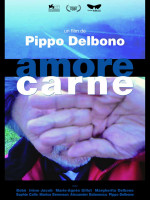Amore carne Filming Locations
Amore carne Filming Locations
Sibiu is a city in Transylvania, central Romania. It’s known for Germanic architecture in its old town, the legacy of 12th-century Saxon settlers. Around the city are the remains of medieval walls and towers, including the 13th-century Council Tower. In the upper town, Brukenthal Palace now houses the Brukenthal National Museum, with European paintings. The nearby Evangelical Cathedral has gravestones in its walls.
Bucharest, in southern Romania, is the country's capital and commercial center. Its iconic landmark is the massive, communist-era Palatul Parlamentului government building, which has 1,100 rooms. Nearby, the historic Lipscani district is home to an energetic nightlife scene as well as tiny Eastern Orthodox Stavropoleos Church and 15th-century Curtea Veche Palace, where Prince Vlad III (“The Impaler”) once ruled.
Paris, France's capital, is a major European city and a global center for art, fashion, gastronomy and culture. Its 19th-century cityscape is crisscrossed by wide boulevards and the River Seine. Beyond such landmarks as the Eiffel Tower and the 12th-century, Gothic Notre-Dame cathedral, the city is known for its cafe culture and designer boutiques along the Rue du Faubourg Saint-Honoré.
Avignon, a city in southeastern France’s Provence region, is set on the Rhône River. From 1309 to 1377, it was the seat of the Catholic popes. It remained under papal rule until becoming part of France in 1791. This legacy can be seen in the massive Palais des Papes (Popes' Palace) in the city center, which is surrounded by medieval stone ramparts.
Istanbul is a major city in Turkey that straddles Europe and Asia across the Bosphorus Strait. Its Old City reflects cultural influences of the many empires that once ruled here. In the Sultanahmet district, the open-air, Roman-era Hippodrome was for centuries the site of chariot races, and Egyptian obelisks also remain. The iconic Byzantine Hagia Sophia features a soaring 6th-century dome and rare Christian mosaics.
Turin is the capital city of Piedmont in northern Italy, known for its refined architecture and cuisine. The Alps rise to the northwest of the city. Stately baroque buildings and old cafes line Turin's boulevards and grand squares such as Piazza Castello and Piazza San Carlo. Nearby is the soaring spire of the Mole Antonelliana, a 19th-century tower housing the interactive National Cinema Museum.
Bergen is a city on Norway’s southwestern coast. It's surrounded by mountains and fjords, including Sognefjord, the country’s longest and deepest. Bryggen features colorful wooden houses on the old wharf, once a center of the Hanseatic League's trading empire. The Fløibanen Funicular goes up Fløyen Mountain for panoramic views and hiking trails. The Edvard Grieg House is where the renowned composer once lived.
L'Aquila is a city and comune in central Italy. It is the capital city of both the Abruzzo region and of the Province of L'Aquila. As of 2023, it has a population of 69,558 inhabitants.
The Canton of Geneva, officially the Republic and Canton of Geneva, is one of the 26 cantons of the Swiss Confederation. It is composed of forty-five municipalities, and the seat of the government and parliament is in the City of Geneva. Geneva is the French-speaking westernmost canton of Switzerland.
Budapest, Hungary’s capital, is bisected by the River Danube. Its 19th-century Chain Bridge connects the hilly Buda district with flat Pest. A funicular runs up Castle Hill to Buda’s Old Town, where the Budapest History Museum traces city life from Roman times onward. Trinity Square is home to 13th-century Matthias Church and the turrets of the Fishermen’s Bastion, which offer sweeping views.
Bayonne is a city in the Basque Country region of southwest France, where the Nive and Adour rivers meet. Narrow medieval streets characterize the old Grand Bayonne district. Here lie the Gothic-style Bayonne Cathedral, with its 13th-century cloister, and Château Vieux castle. Across the Nive river in the Petit Bayonne district is the Musée Basque, a museum devoted to the region’s arts, crafts and traditions.
Amore carne (2011)
During a series of voyages, the pocket cameras of Pippo Delbono capture unique moments and ordinary and extraordinary meetings. From a hotel room in Paris to another in Budapest, from Istanbul to Bucharest, the journeys weave a fabric of the contemporary world. Its testimonials--some famous, others anonymous--say or dance their vision of the universe.


